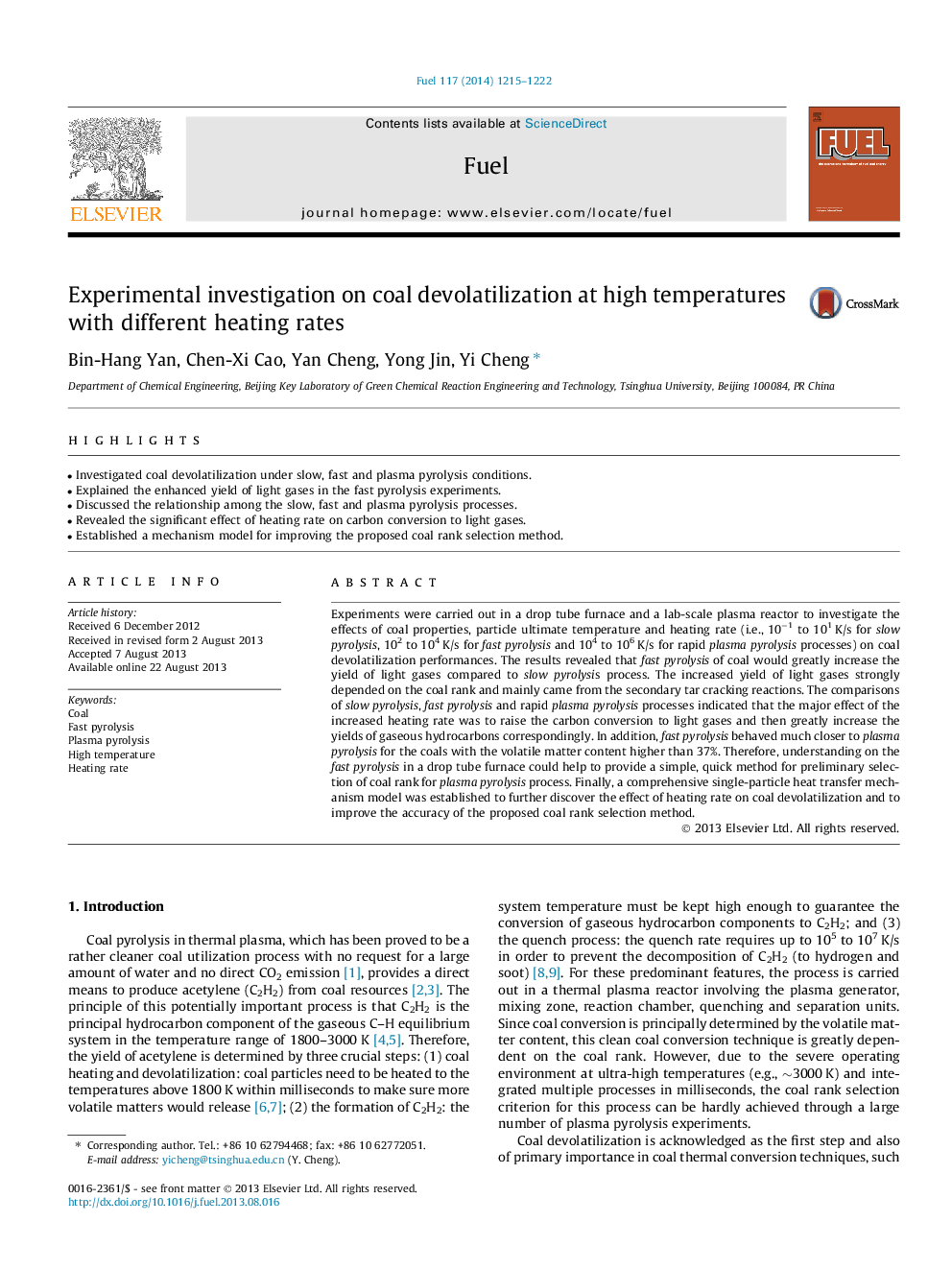| Article ID | Journal | Published Year | Pages | File Type |
|---|---|---|---|---|
| 10272253 | Fuel | 2014 | 8 Pages |
Abstract
Experiments were carried out in a drop tube furnace and a lab-scale plasma reactor to investigate the effects of coal properties, particle ultimate temperature and heating rate (i.e., 10â1 to 101Â K/s for slow pyrolysis, 102 to 104Â K/s for fast pyrolysis and 104 to 106Â K/s for rapid plasma pyrolysis processes) on coal devolatilization performances. The results revealed that fast pyrolysis of coal would greatly increase the yield of light gases compared to slow pyrolysis process. The increased yield of light gases strongly depended on the coal rank and mainly came from the secondary tar cracking reactions. The comparisons of slow pyrolysis, fast pyrolysis and rapid plasma pyrolysis processes indicated that the major effect of the increased heating rate was to raise the carbon conversion to light gases and then greatly increase the yields of gaseous hydrocarbons correspondingly. In addition, fast pyrolysis behaved much closer to plasma pyrolysis for the coals with the volatile matter content higher than 37%. Therefore, understanding on the fast pyrolysis in a drop tube furnace could help to provide a simple, quick method for preliminary selection of coal rank for plasma pyrolysis process. Finally, a comprehensive single-particle heat transfer mechanism model was established to further discover the effect of heating rate on coal devolatilization and to improve the accuracy of the proposed coal rank selection method.
Related Topics
Physical Sciences and Engineering
Chemical Engineering
Chemical Engineering (General)
Authors
Bin-Hang Yan, Chen-Xi Cao, Yan Cheng, Yong Jin, Yi Cheng,
